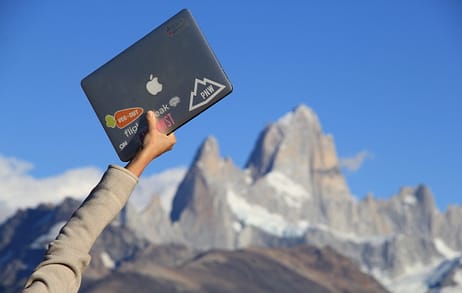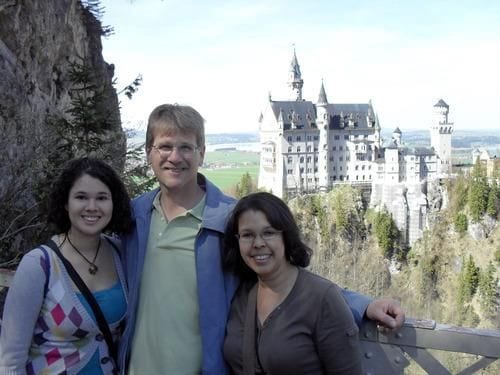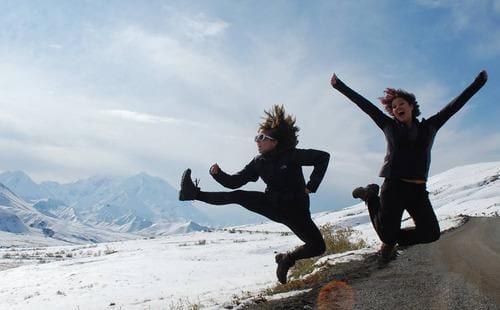Guest post by Kelsey Dixon
The young professionals of today are writing the history of its generation in the workforce. Our generation is driving change and innovation in our world and it’s different than what the generations before us experienced. So why would the workforce stay the same? We want to live in the NOW and we refuse to only work for retirement.
With the world at our keyboards, our access is limitless. We are more connected than ever. Why not use this as a foundation for a career? For a lifestyle? Work can be a passion and a blend into your personal hopes and dreams. It can be an enabler rather than a detractor.
Curious about how I do what I do?
You may share in my curiosity to seek what is different—what is uniquely your own—and you’re not alone. There are thousands of people, heavily millennials, who are building something from scratch in order for their work to fit their desired lifestyle, not the contrast. It’s not a new concept. But the world is starting to notice, and starting to evolve to fit this lifestyle. Hence why companies like Behere exist, to make living in a new place easier.

There’s enough room and opportunity for anyone to pursue it. Existing roles are being reinvigorated through the perception of a new lens, giving them boundless possibilities of execution. Companies and cultures are shifting to realize that hustle can happen outside of the cubicle and progress can thrive regardless of physical location. On top of this, there are jobs created daily that require no physical space, just skills and a laptop. Even beyond that, we’ve never had better access to the tools that can help us create our own jobs, income and revenue streams—out of thin air.
But how exactly do we do that…
Perhaps the scariest part about this is the fact that no one before us has laid out a successful path for it. We get to pave our own trail, and navigate the speed bumps along the way. This isn’t smooth sailing, this is a caught-in-the-windstorm and batten down the hatches sort of sail. But the cool part is, the views are pretty astounding (literally and figuratively).
This is how it started for me
In September of 2017, I left the comforts of my waterfront Seattle apartment to pursue a dream: live and work abroad. I had heard of the stories about the people who quit their corporate jobs to go live on an island and work behind an ice cream stand. I had seen that this was possible, but I still had to do this radical thing with less-than-specific guidance because I was doing it differently: as an entrepreneur, with clients, with a team, with a co-founder. 99% of my job was through my computer anyway, so in theory, this would work right?
I’ve taken my work abroad, from a van trapezeing around the north and south islands of New Zealand for a month. And I got to see Auckland, Wellington, Tauranga, Mt. Cook National Park, Fjord National Park and more.
The South American leg of my journey
While traveling and working in South America, I was the most productive I had ever been, inspired by my environment and the space I worked in. All this instead of feeling the grind of rush hour traffic and inside the sphere of the same four walls every day. My video conferences were super productive because I took advantage of the scheduled time I had with anyone at any given time. No longer were the days of luxury where I could tap my partner on the shoulder and ask a quick question. Instead, I relied heavily on platforms like, Asana, G-chat, Slack, FaceTime, Zoom, Skype or GoogleDocs. We found out by accident (through calling to try and cancel our American cell plan) that our T-Mobile plan allows us unlimited texting and data in more than 210 countries at no additional fees—most of South America included.
The craziest part was the 60-hour round trip drive to Patagonia, and then visiting Patagonia, without taking a single day off work. I’m fortunate here that I have a hubby that loves to drive. I worked a 1 p.m. to 10 p.m. day because that was 8 a.m. to 5 p.m. Seattle hours. So, in the mornings we hustled the drive, day by day. And we’d find a friendly place to stay (with fast WiFi, always a requirement). I’d finish my day while my husband took care of all our meals, errands and planning next steps (he was also lightly working on a startup of his own). With GoogleDocs’ offline feature, I was even able to knock out a lot of writing while literally surviving the treacherous roads in the middle-of-nowhere Argentina. But I did it. I maintained my high-production workload while seeing El Chalten, hiking the Tres Lagos, exploring Torres del Paine and enjoying coffee in Puerto Natales. Not your normal after-hours activity.

How you can make it possible
My point (and hope) in sharing my story is to show it’s possible. It may sound crazy, but it can be your reality. By working while traveling, I was able to fund our travels so that we could stay longer. And by traveling while working, I brought a fresh, global perspective to our team. By leaving the day-to-day in the office, it also left more responsibility to my team, which equated to massive jump in growth and a slashing of comfort zones. I became a production house for the backend of our business, elevating it to challenge our growth projections even over a successful year prior. And I sat in a hammock rather than at a desk (it wasn’t always that glamorous, but still worth it!).
Again, this is why companies like Behere exist. Because by booking with Behere you have your housing, workspace, fitness studio, plus an international community, all while abroad. This is essential in the world we live in today, where living more flexibly is not only possible, but beneficial in so many capacities. We all have dreams to live a life we wish we had—attach it to an action and a timeline? There will be no better time, so why not now?
And why not you?
Want to travel and live around the world? Here are your next steps.

I shared my story about taking my business abroad. Now, this is how I did it…
-
Find your work.
There may be an opportunity to do your current job remote. The 4 Hour Work Week by Tim Ferris has a lot of helpful tips in asking for it. Otherwise, you’ll need to find it or create it. In finding it, utilize resources, sites and communities that offer remote job opportunities. Have a skill? You could freelance, if you’ve got a little cash saved up that could get you by either before getting work or down the road for a cushion. Or, build it. That’s what I did.
-
Pick your place.
I recommend somewhere that’s less expensive than where you live now. Behere has some great locations to choose from, so that’s a great place to start. That way, you can give yourself some grace to get set up in your work, and you may even save more money that way (we were able to save a lot more in Chile than what we were saving in the U.S.). Don’t forget to think about timezones. For me, it mattered that I was able to work during Seattle business hours, so South America was appealing for that reason.
-
Downsize, downsize, downsize.
Sell the things you don’t need on eBay or Craigslist. It’s all replaceable. By having less, you’ll be more mobile and flexible. Bring less clothes, you won’t need them all or you can buy them there (we usually all wear the same core things anyway!).
-
Get set up.
This seems daunting, but it’s really not too bad once you get into it. This means rerouting your mail to a permanent address if you’re moving out (we chose my mom’s home. Thanks, mom!). Book at least your first week or use a platform like Behere to book everything a month before you arrive. Notify your credit cards (and make sure you don’t have foreign transaction fees). Set aside savings for back up. Adjust your cell plane (T-Mobile’s One Plan provides data/texting in over 210 countries! I highly recommend looking into this option).
-
Buy the things.
I’m a proponent for downsizing, but there will be some things I’d suggest purchasing to make downsizing easier. For example, clothes that can work for various scenarios. This is largely dependent on where you’re going. Get quality, easy luggage, backpacks and bags to protect your tech as well as portable chargers.
-
Pick a date.
This might be the most important part of this list. Pick the date and then make the list so you can work backwards toward your goal! Even if you’re not sure if it’ll be possible, if you pencil in the date, the urgency suddenly exists and you can say it out loud and make it real.
-
GO.
Plan the basics I’ve mentioned here but don’t overly plan and overthink it. Just do it. You CAN. It won’t be perfect, but you’ll figure it out along the way! Enjoy it. Relish in the uncertainty. Know you’re living your dream and most people don’t have the courage to even do that. You’ll figure out the rest, and your experience will be invaluable.
Guest Post by: Kelsey Dixon
 Kelsey Dixon is the “Dixon” of the female millennial duo who founded davies + dixon, a digital marketing firm that creates daring ideas to get stories told. Kelsey currently remotely manages her team and clients as she adventures. Follow Kelsey’s journey on Instagram at @kelseystartingroute.
Kelsey Dixon is the “Dixon” of the female millennial duo who founded davies + dixon, a digital marketing firm that creates daring ideas to get stories told. Kelsey currently remotely manages her team and clients as she adventures. Follow Kelsey’s journey on Instagram at @kelseystartingroute.
Images and words courtesy of Kelsey Dixon.
































 In order to gain the most clarity, the study showed that you have to actually
In order to gain the most clarity, the study showed that you have to actually 
